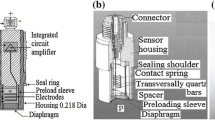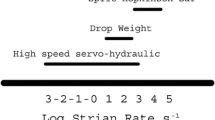The shortage of metal, which can be used to assess the degree of its degradation, makes it necessary to look for ways to increase the information content of tests to justify the extension of the service life of critical equipment and structural elements of various industries. Today, impact bending tests of various types of specimens are one of the most common types of experimental determination of the energy and mechanical characteristics of structural materials. Different types of impact testers are used to perform them. Conventional pendulum impact testers do not allow us to obtain detailed information about the nature of specimen failure and features of crack propagation in the material, so recently, much attention has been given to the instrumentation of experimental equipment using modern recording systems. In this work, the instrumentation of an MK-30 pendulum impact tester was carried out using a multichannel high-speed strain and force recording system, which allows obtaining results with a sampling rate of up to 20 MHz. A procedure for the calibration of the strain gauges located on the pendulum blade and calibration of the recording system and amplifier blockt for three different signal levels is described. Test trials of specimens of different sizes made of different types of steels were carried out, and loading diagrams in the force–time coordinates were obtained. It is shown that the obtained loading diagrams can be used to calculate the values of the total energy of both deformation and fracture and its components: crack nucleation energy, ductile crack growth energy, brittle crack breakthrough energy and final ductile fracture energy. Using fractographic analysis, the characteristic portions of loading diagrams were compared with the corresponding zones of the fracture surfaces of specimens. The high sensitivity of the recording system allowed us to calculate with high accuracy the values of the crack at brittle fracture and its average velocity in test specimens.







Similar content being viewed by others
References
PNAE G-7-002-86. Strength Design Standards for the Equipment and Pipelines of Nuclear Power Plants [in Russian], Energoatomizdat, Moscow (1986).
IAEA-2005. A Guide to Thermal Shock Analysis for Nuclear Power Plants with WWER Reactors, IAEAEBP-WWER-08, IAEA, Vienna (2005).
VERLIFE-2013. Guidelines For Integrity and Life time Assessment of Components and Piping in WWER Nuclear Power Plants, Version 2013.315 (2013).
R. Chaouadi and R. Gerard, “Development of a method for extracting fracture toughness from instrumented Charpy impact tests in the ductile and transition regimes,” Theor. Appl. Fract. Mech., 115, 103080 (2021).
E. Kondryakov, O. Panasenko, A. Kravchuk, and V. Kharchenko, “Peculiarities of the crack initiation and propagation in different specimen types,” Proc. Struct. Integr., 16, 43–50 (2019).
F. Körber, A. A. Storp, Mitt. K-W-I Eisenf., 8 (1926).
E. A. Kondryakov, V. N. Zhmaka, V. V. Kharchenko, et al., “System of strain and load measurement in dynamic testing of materials,” Strength Mater., 37, No. 3, 331–335 (2005). https://doi.org/10.1007/s11223-005-0046-6
V. V. Kharchenko, E. A. Kondryakov, V N. Zhmaka, and A. A. Babutskii, “Instrumented impact faster: basic elements, analysis of servicability,” in: Reliability and Durability of Machines and Structures [in Russian], No. 27, Kiev (2006), pp. 121–130.
R. J. Chaouadi and L. Puzzolante, “Procedure to estimate the crack resistance curve from the instrumented Charpy V-notched impact test,” ICF-12, Toronto, Canada (2009).
H. J. Schindler and U. Morf, “A closer look at estimation of fracture toughness from Charpy V-notch tests,” Int. J. Pres. Ves. Pip., 55, 203–212 (1993).
P. R. Sreenivasan, “Estimation of quasi-static J–R curves from Charpy energy and adaptation to ASTM E 1921 reference temperature estimation of ferritic steels,” Nucl. Eng. Des., 269, 125–129 (2014).
ISO 14556-2000. Steel – Charpy V-Notch Pendulum Impact Test – Instrumented Test Method, International Organization of Standardization (2000).
Author information
Authors and Affiliations
Corresponding author
Additional information
Translated from Problemy Mitsnosti, No. 5, pp. 108 – 115, September – October, 2022.
Rights and permissions
Springer Nature or its licensor (e.g. a society or other partner) holds exclusive rights to this article under a publishing agreement with the author(s) or other rightsholder(s); author self-archiving of the accepted manuscript version of this article is solely governed by the terms of such publishing agreement and applicable law.
About this article
Cite this article
Kravchuk, A.V., Kondryakov, E.A., Zhmaka, V.N. et al. Instrumentation of a Pendulum Impact Testing Machine for Impact Bending Tests. Strength Mater 54, 850–856 (2022). https://doi.org/10.1007/s11223-022-00461-9
Received:
Published:
Issue Date:
DOI: https://doi.org/10.1007/s11223-022-00461-9




